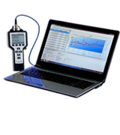Thermal measuring instruments for the precise measuring of flow or mass flow rate in gaseous media
Thermal TA
Fixed and portable measurement of consumption quantity in compressed air and other clean gases; Measurement of laminar flow in clean rooms, under fan-filter-units; flow measurement in production facilities of the pharma-; food-processing- and semiconductor industry as well as flow-monitoring in glove boxes, isolators or sedimentation rate measurements in spray booths. Measurement of burner air and leakage flow; Monitoring of safety-relevant facilities – in aerospace as well as boats and ships.

offer greater flexibility when used in pipes and ducts with larger diameters or in portable applications.
Read more
provide almost negligible measurement uncertainty when used in small pipe diameters.
Read more
for fixed evaluation of thermal flow probes TA and measuring tubes TA Di.
Read more
for portable applications with TA probes
Read more
PC software for downloading data from handheld units or configuring evaluation units ...
Read moreHow does a thermal mass flow sensor (hot wire anemometer) work?
The calorimetric measuring method is based on electrically heating a mechanically protected installed sensor element. Measure for flow velocity of air or gas, is the difference in temperature between the heated element and the medium. Thanks to Höntzsch’s high quality thermal flow sensors very low and high flow velocities, mass flow, standard flow rate of gases can be measured with only one sensor.
Standard flow rate and mass flow rate can even be measured under extreme circumstances with our calorimetric flow sensors!
Due to the principle of measurement operating temperature and pressure of the medium have no influence on the measuring results. Since it’s a calorimetric measuring method only property data and gas components are crucial.

What advantages do thermal flow sensors have?
Provided that the medium is mostly condensate and pollution free Höntzsch thermal flow sensors deliver exact and reliable results even under extreme circumstances. They are characerised by their longevity, long-term stability and corrosion resistance. Beside inert gases such as nitrogen and argon the sensors can also be applied in almost all other gases.
One of the great advantages of thermal flow measurement is that the sensors have no moving parts, which makes them long-lasting and maintenance-free. They also cause only a small loss of pressure. With a turndown ratio of 1:1000 flow rate of leakage flow can be measured precisely up to maximum withdrawal of gas even with a working pressure up to 50 bar.
Our thermal flow sensors are also perfectly suited for the use in Ex-applications (ATEX, CSA) and approved of the corresponding institutions
Höntzsch thermal flow sensors can be sterilised with hydrogen peroxide H2O2 (CIP/SIP).
For which media is the thermal flow sensor suited?
Our thermal flow measuring instruments are predestinated for all clean, unpolluted gases such as air, compressed air, landfill gas, natural gas, nitrogen (N2), methane (CH4), helium (He), argon (Ar), propane (C3H8), butane (C4H10), carbon dioxide (CO2), hydrogen (H), sulfur hexafluoride (SF6), ethyne (C2H2) etc.
What industries are suited for the thermal flow measurement?
Thermal flow sensors, also known as hot-wire anemometers are used for all kinds of applications. Höntzsch thermal mass flow sensors are perfectly suited for fixed and portable consumption measurement of compressed air and other gases and therefore allow the measuring of standard flow velocity (measuring range of 0.08 up to 200 Nm/s), standard flow rate (0.04 Nm³/h) or mass flow rate of the measured gas with a time constant of only 1 s. For visualisation and processing of the consumption quantity measurement for example of natural gas, propane, butane, LPG, compressed air, CDA there are several output signals available such as 4-20 mA, quantity pulse, M-Bus or WiFi, Modbus TCP and I/O-link.
The most common fields of application are for example:
- Consumption quantity measurement for energy monitoring, energy management and in facilities
- Fixed and portable consumption quantity measurement in air and different clean gases
- Detecting leackages in process plants
- Performance monitoring of compressors
- Sludge aeration air in sedimentation tanks/nitrification tanks
- Measuring of very low flow velocities
- Laminarlow applications in clean rooms, laboratories, under fan-filter-units, in production facilities of the pharma- (glove boxes); food-processing- and semiconductor industry (isolators)
- Monitoring of sedimentation rate for example in the automotive industry (spray booths)
- For high-precision gas mass flow proportional measuring in engine test benches, climatic chambers, combustion control/supply burner air
- Aerospace, on ships and boats

Multigas applications and their areas of application
In the new generation of sensors the same device (M-Bus optional) can be used for a variety of gases even in Ex-applications category 3G and 3D (zone 2 and 22), without requiring recalibration or return to the manufacturer. It provides the possibility to only use one basic instrument or even keep stock. This results in flexibility and additional value for welding installations, burner control units and laser cutting machines or in energy management and consumption monitoring. A variety of gas characteristics such as air, compressed air, oxygen, nitrogen, carbon dioxide, argon, city gas, natural gas, mathane, tracer gases, hydrogen, helium, landfill and biogas are logged with transfer characteristics. Simple switching between gases makes the measuring instrument suitable for special applications in construction plants with changing requirements. Further gases can be stored as special characteristics based on real gas calibrations. Just contact us!

Which designs are offered for thermal flow sensors?
Because of their simple installation insertion probes are perfectly suited for the flexible use in pipelines and ducts starting at 25mm. Removal is easily possible via so-called probe guide pieces in pressurised pipelines with additional ball valves.
Models TA10 react to lowest velocities in mass flow and can be used in extrem ranges with over 200 Nm/s. Thermal flow sensors as insertion probes
- Can be used in working pressures up to 50 bar
- Have a working temperature range, depending on design and model between -20 and +240 °C
Measuring tubes are used in smaller pipe diameters. In a fixed applications, they provide the following qualities:
- Grid dimensions of the inside diameter from 8 up to 53.1 mm
- Measuring range between 0.04 Nm³/h and 1196 Nm³/h
- Best possible measurement uncertainty
- Working temperature range between -20° and +240° C
- Maximum working pressure up to 50 bar
Customer specific designs are always possible.
Depending on the model transducers are already integrated. Data can also be viewed and transferred via WLAN/WiFi interface from any device with a web browser.
Schnittstellen wie M-Bus, Modbus TCP.
Further interfaces are 4 to 20 mA analog outputs, media temperature, several bus interfaces such as M-Bus, Modbus TCP.


